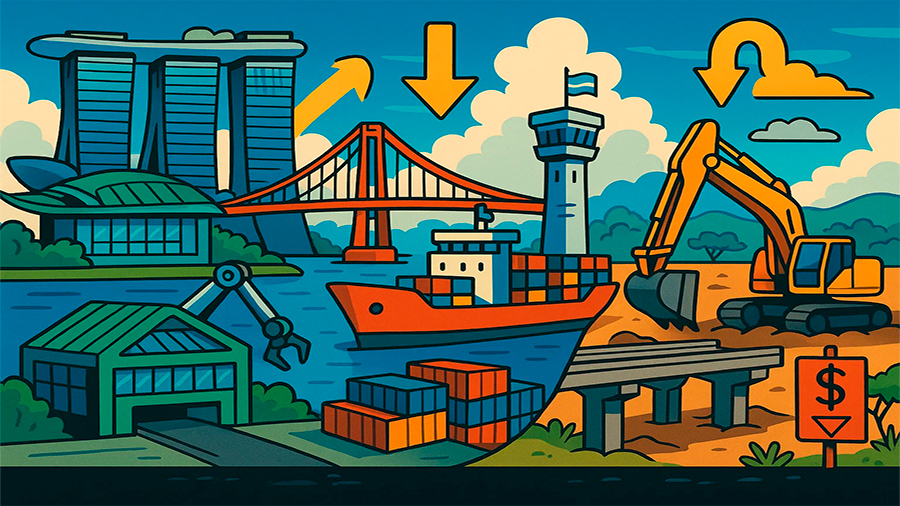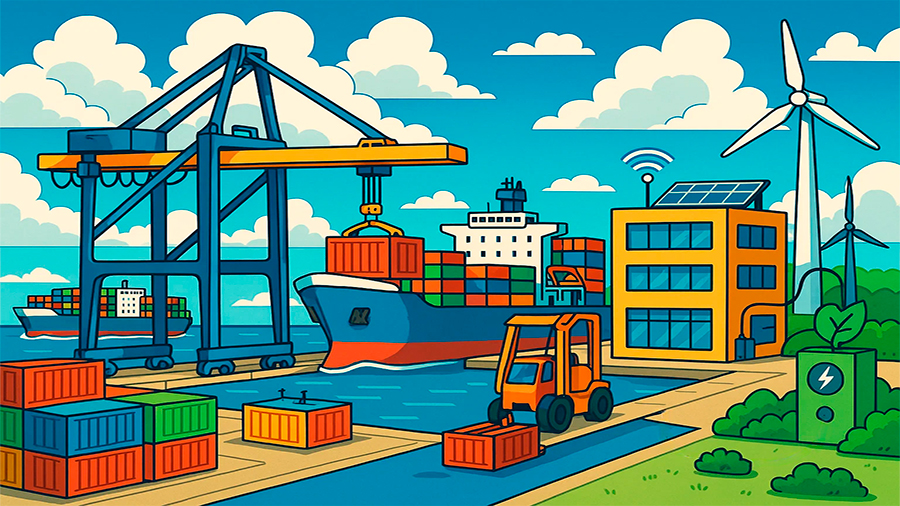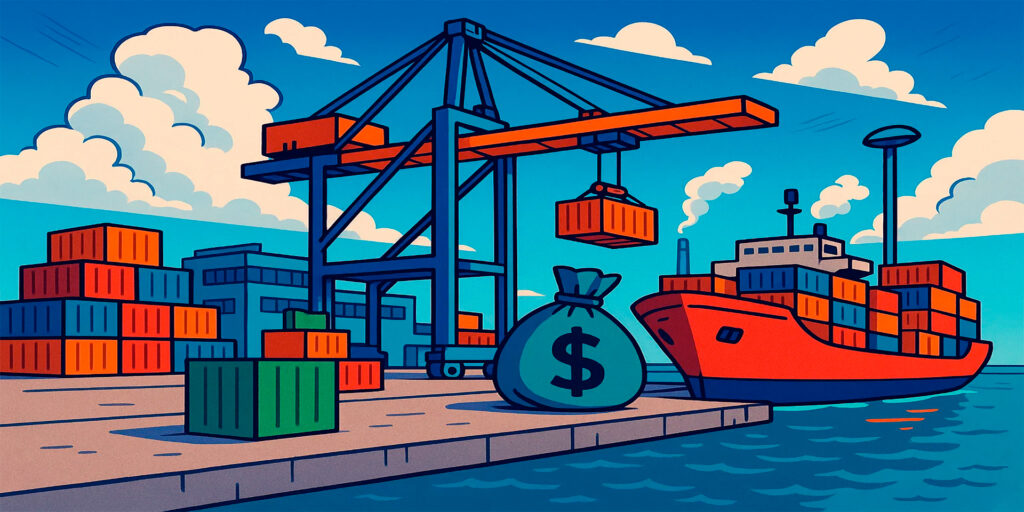Loans for Port Infrastructure Modernization: Is It Worth Investing?
Ports are the backbone of global trade, but many facilities struggle with outdated equipment, slow processing, and rising environmental pressure. Modernization—whether through new cranes, automated systems, or digital logistics platforms—requires enormous funding. Loans often become the main financing option, spreading costs over years while enabling immediate upgrades. But the question remains: is taking on debt worth it for such projects? The answer depends on how benefits like efficiency, sustainability, and competitiveness balance against risks of overleveraging, shifting trade patterns, or political uncertainty. For investors and governments, careful evaluation is essential before committing to long-term borrowing.
Why Ports Need Modernization
Global trade has grown dramatically, and ships have become bigger, faster, and more complex. Ports unable to handle mega-ships lose business to rivals with deeper berths, advanced cranes, and faster turnaround times. Congestion at outdated terminals leads to costly delays that ripple across supply chains. Export-dependent economies suffer most when their ports cannot keep pace. Modernization is no longer a luxury—it is a necessity for competitiveness. Environmental regulations also push ports toward greener infrastructure, such as electrified cranes and shore power to reduce emissions. Digitalization adds another layer: real-time cargo tracking, automated customs, and advanced security. Together, these upgrades determine whether a port thrives or declines in an increasingly competitive environment.
Competitiveness under pressure
When vessels bypass outdated ports, entire economies lose opportunities for revenue, investment, and jobs.
Sustainability expectations
Without eco-friendly infrastructure, ports face fines, community opposition, and reputational damage.

Why Loans Are a Common Choice
Modernization demands billions of dollars, sums that few governments or private operators can cover outright. Loans allow ports to invest now while spreading repayment over decades. This ensures projects align repayment schedules with future income from port fees, tariffs, and contracts. For lenders, ports are attractive borrowers because of steady revenue streams, making loans safer compared to other infrastructure projects. Using credit also avoids delays caused by waiting to build reserves, ensuring ports remain competitive. However, the long-term debt burden requires careful structuring to match realistic revenue growth, not overly optimistic projections that risk default or financial strain.
Credit as a bridge
Loans unlock projects that otherwise remain stalled, turning blueprints into functioning terminals.
Lenders’ perspective
Stable port revenues create confidence, but lenders still monitor trade cycles and global shipping demand.
The Potential Gains from Borrowing
Loans can dramatically enhance port performance. Expanding terminals reduces congestion and improves efficiency. New cranes and automated handling lower labor costs and speed up operations. Ports with deeper berths attract mega-ships, capturing new traffic and boosting revenue. Digital tools streamline customs and security, making ports more attractive to shippers. Green investments—shore power, renewable energy integration, and waste reduction—add compliance and reputational benefits. Ultimately, the gains from borrowing can outweigh the costs if repayment is covered by increased throughput, higher service fees, and long-term savings from greater efficiency.
Capacity expansion
Bigger terminals allow more ships, reducing wait times and increasing turnover.
Digital and green benefits
Modern systems cut emissions, speed processes, and win contracts with sustainability-focused shippers.
The Risks Investors Need to Consider
Borrowing for port upgrades is not without dangers. Projects frequently run over budget due to construction delays, regulatory obstacles, or political disputes. Revenue projections often assume continuous trade growth, but downturns, geopolitical tensions, or supply chain shocks can derail forecasts. Heavy debt also creates vulnerability—if income lags, repayment schedules may become unsustainable. Ports tied to single commodities risk exposure to demand changes, like coal or oil declining with the energy transition. For investors, the key challenge lies in balancing optimism with realism. Debt-financed modernization works best when backed by transparent planning and diversified revenue sources, not speculative expectations.
Construction and political risks
Policy changes or protests can slow projects and inflate costs.
Revenue uncertainty
Dependence on global shipping patterns makes ports sensitive to trade disruptions.
Public vs. Private Financing
Financing models shape both risk and control. Government loans, often sovereign-backed, allow national control over strategic assets but add to public debt. Public-private partnerships (PPPs) shift risk to investors and use port revenues directly for loan repayment. PPPs bring efficiency and private sector discipline, but profits may be prioritized over community needs. Each model comes with trade-offs: sovereign-backed loans are often cheaper, while private investment can unlock efficiency but reduce government influence. Choosing the right structure depends on whether the goal is protecting public balance sheets, ensuring competitiveness, or attracting foreign capital to speed development.
Government-backed borrowing
Cheaper financing, but repayment risk falls on taxpayers.
Private sector role
Private partners can bring speed and expertise but may seek returns that overshadow national priorities.

Lessons from Global Examples
Real projects show both the advantages and challenges of loan financing. Singapore used large credit facilities to fund expansion, combining automation and sustainability. The results reinforced its dominance as a global hub. Greece’s Port of Piraeus, financed partly by loans and private investment, became a gateway for Asia-Europe trade, though debates continue over foreign control and debt reliance. In Africa, some loan-funded projects overestimated trade flows, leaving governments with debt but underperforming infrastructure. These examples reveal the importance of realistic forecasting, transparent governance, and aligning projects with long-term trade trends rather than short-term political gains.
Singapore’s success
Strategic borrowing matched with automation and scale turned loans into growth drivers.
Mixed outcomes elsewhere
In regions with weaker governance, loans sometimes created debt without delivering expected results.
Mini Case Study: Rotterdam’s Green Port Investments
The Port of Rotterdam provides a clear example of how loans can shape sustainable modernization. Facing stricter EU environmental rules, Rotterdam secured financing to electrify cranes, expand shore power for ships, and integrate renewable energy. The loans were structured with long repayment horizons aligned to expected revenue growth from handling more vessels and offering premium green services. Shipping companies welcomed the upgrades, as using greener ports helped them meet emissions targets. For investors, Rotterdam’s case highlights that loans aimed at sustainability not only reduce environmental risks but also create competitive advantage in a market shifting toward stricter standards.
Environmental compliance as advantage
Green infrastructure financed by loans allowed Rotterdam to attract more traffic and future-proof operations.
Repayment aligned with growth
Debt terms reflected realistic income forecasts, preventing overstrain on port finances.
The Future of Loan-Financed Port Modernization
Looking forward, modernization loans will increasingly target sustainability and digitalization. Green ports are a global priority, with credit directed toward electrification, renewable integration, and waste reduction systems. Digital transformation is another area where loans will play a key role—investments in AI-driven logistics, blockchain cargo tracking, and automated customs processing are no longer optional but essential. Investors prefer financing projects that integrate both green and digital elements, as these improve efficiency, reduce risk, and secure compliance with global trade standards. Ports that embrace this dual transformation with borrowed capital will be better positioned to thrive in a fast-changing environment.
Focus on sustainability
Lenders are increasingly tying financing to green metrics, making eco-investments more attractive.
Digital as necessity
Automation, real-time tracking, and smart customs will define the next generation of modern ports.
Conclusion
Loans for port modernization are often worth the investment, provided planning is careful and execution transparent. Borrowed capital enables immediate upgrades in capacity, efficiency, and sustainability, securing competitiveness in global trade. Risks remain—from construction delays to shifting trade flows—but realistic forecasting and well-structured financing can mitigate them. For governments, investors, and port operators, the real decision is not whether to borrow but how to design loan strategies that build resilient, green, and digital-ready infrastructure. Done wisely, loan-financed modernization secures not only repayment but also the long-term future of global trade gateways.
The key takeaway
Debt-financed modernization works when matched with strong governance, realistic revenue, and forward-looking design. Ports that ignore these lessons risk turning loans into liabilities rather than assets.

